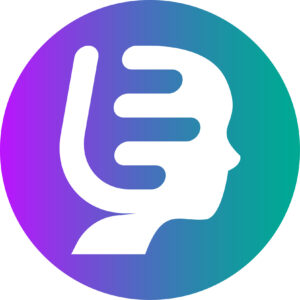Creating Effective Learning For Achievement
Designing the right content for eLearning courses is essential to the success of any certification program. Planning the right topics for your eLearning content that covers the domains and competencies to be tested and validated ensures that learners don't just pass an assessment, but truly develop the skills and knowledge the certification is meant to validate.
When courses are engaging, well-structured, and aligned with measurable outcomes, they prepare learners to demonstrate real-world competence with confidence. Planning ahead and mapping out the blueprint for your certification will help you achieve this. Then, packaging the eLearning courses and certification vouchers ensures the maximum effectiveness of the whole program. This article walks you through each step of building a certification program and explains how to develop eLearning courses that support it.
In this article, you'll find...
- Define The Purpose Of Your Program
- Build eLearning Content
- Set Passing Standards
- Leverage Technology
Define The Purpose Of Your Program
The foundation of a strong program begins with identifying the core domains of knowledge, competencies, and performance objectives that the certification aims to measure. Here is a step-by-step process to follow before you start creating any eLearning content.
Define The Purpose And Audience
Before you build anything, the first step is to ask yourself, "why does this certification exist?"
- Identify what skills or knowledge the certification should validate
For example, are you testing technical know-how, such as data analysis, or soft skills, like leadership communication? - Clarify your audience
Entry-level learners require assessments that differ significantly from those of mid-career professionals or advanced experts. - Make sure it's relevant
A certification should connect to a recognized industry need or skill gap. If the credential doesn't help someone advance or meet a professional standard, it won't carry weight.
Think of this stage as building your foundation. Without clarity on purpose and audience, the rest of the program may not be stable.
Develop Clear Learning Objectives
Learning objectives are the backbone of your certification. They define what success looks like for learners. Break each course into measurable outcomes. For example, "Learners will be able to configure a cloud database" is measurable; "Learners will understand databases" is not. These objectives guide both your learning path (what's taught) and your exam blueprint (what's tested).
Clear objectives not only help you design an effective program but also give learners the confidence they need. If they know exactly what they’re working toward, they can focus their energy, and you can measure mastery with confidence.
Create An Exam Blueprint
An exam blueprint (sometimes called a test blueprint or assessment plan) is essentially the road map for designing a fair, valid, and reliable certification exam. It's a document that:
- Defines what will be tested
Aligns exam questions with specific learning objectives or competencies. - Shows topic weightings
Indicates how much of the exam will focus on each topic area (e.g., 30% on safety, 20% on compliance, 50% on technical skills) - Define the number of questions
Will your test consist of 30 questions or 60? More? - Distribute questions across objectives
A simple rule: aim for at least three questions per objective. That way, you're testing true understanding, not lucky guesses. - Specifies question types and difficulty levels
Ensures a balanced mix of formats (multiple choice, scenario-based, reasoning questions, simulations, etc.) and a range of difficulty. - Acts as a guide for item writers and reviewers
Helps ensure consistency, fairness, and relevance across all exam versions.
The blueprint serves as your quality control mechanism. It ensures fairness and prevents one section of content from being over- or under-tested.
Build eLearning Content
eLearning should also be viewed as one element in a broader learning ecosystem, rather than the entire program. A successful certification journey typically involves multiple components, including hands-on experience, access to reference materials or white papers, mentoring opportunities, and certification exam preparation resources. eLearning, in this context, serves to reinforce and structure the learner's preparation, but the goal is to develop applied expertise, not just knowledge retention.
When designing the courses themselves, the focus should be on building competency rather than simply delivering content. Certification programs validate both recall and reasoning skills, so the eLearning experience should include real-world scenarios, problem-solving exercises, and case studies that help learners apply their knowledge. This approach deepens understanding and prepares participants for the higher-level thinking required in certification assessments.
Each eLearning module should have clear, measurable learning objectives that are mapped directly to the competencies outlined in the certification blueprint. This alignment ensures consistency across the training program and helps learners understand how each part of their study contributes to their readiness for certification. Activities, quizzes, and assignments should all be connected to specific learning outcomes, reinforcing the relevance of each component.
Another good practice is to maintain independence between the certification and learning teams when possible. While both teams should share the certification blueprint, the development of certification and the creation of learning content can remain separate. This separation maintains the integrity of the certification by ensuring that assessment results accurately reflect true competence, rather than merely familiarity with course materials.
Set Passing Standards
How do you decide what counts as "passing"? This is where rigor matters.
- Utilize proven methods, such as Angoff or Bookmark, where SMEs estimate the minimum knowledge required to pass.
- Be transparent. Let learners know what it means to be certified, such as answering 70% of questions correctly, demonstrating mastery of key objectives, or meeting a set benchmark.
A well-justified passing score makes your program more credible. It shows the credential has real value, and is not just an arbitrary line in the sand.
Establish Certification Policies
A professional certification is more than a test; it is a complete system. Learners and employers expect clear rules.
- Define retake policies
Can learners try again immediately? After a waiting period? - Set expiration dates and renewal requirements
Many industries require recertification to ensure skills stay current. - Provide digital badges or certificates
There are tools that allow learners to share verifiable credentials online.
Policies create consistency and fairness. They also protect your certification's reputation by ensuring it is respected in the marketplace.
Build A Robust Question Bank For Examination
Leverage eLearning courses and content to fuel a robust question bank. This is one of the most critical components of any credible certification program. It ensures that assessments accurately measure the knowledge, skills, and competencies the certification is designed to validate. The strength of your exam comes from the strength of your questions, so here are some tips to follow:
- Create more questions than you'll use
For a 60-question test, aim for 90–180 items. This allows you to randomize and rotate questions to prevent memorization. - Mix up the formats
Multiple-choice questions are common, but case-based, reasoning, or scenario-driven questions test application, not just recall. - Pilot or analyze your items
Use psychometric analysis or trial runs to see which questions are too easy, too hard, or unclear.
A strong question bank helps your certification stay flexible, fair, and less likely to encourage teaching only to the test.
Leverage Technology
Technology helps your program reach more learners and operate efficiently.
- Use training content authoring tools to quickly create comprehensive and up-to-date training content, assessment questions, and exam banks. One that allows for SCORM, QTI, or CSV files will facilitate easy conversion to the exam delivery tools.
- Use an LMS or exam platform that supports secure testing, randomization of questions, and analytics.
- Proctoring tools help ensure the integrity and security of online exams by preventing cheating and confirming that the person taking the test is really the registered candidate.
The right platform doesn't just deliver the exam—it also gives you valuable data on how learners perform, which objectives are strongest, and where improvements are needed.
Pilot And Refine Before Launch
Piloting and refining a certification program before launch is a vital step in ensuring its credibility, effectiveness, and long-term success. A pilot acts as a controlled test run, allowing program designers to validate that every element functions as intended. Without this phase, even well-designed programs risk misalignment between learning objectives, assessments, and real-world outcomes. Here are some tips on how to test your certification program before launching:
- Run a beta test with a small group of representative learners.
- Gather data on item performance, exam timing, and user feedback.
- Refine eLearning content, adjust the difficulty level, or clarify any confusing instructions before the full launch.
Piloting saves you from costly missteps and ensures learners' first impressions are positive.
Maintain And Update Program
Maintaining and updating a certification program is crucial to maintaining its credibility, relevance, and value over time. As industries evolve, technologies advance, and professional standards shift, certifications must adapt to reflect current practices and emerging skills. Here are some tips on how to keep your certification program current:
- Refresh regularly
As industry standards evolve, so should your learning content and the questions you ask. - Use performance data
If learners consistently miss one objective, it may be that the objective is taught or written unclearly. - Schedule reviews
Annual or semi-annual updates keep your program trustworthy.
A certification is not "set it and forget it." Updating regularly protects its value and keeps learners and employers confident in what it represents.
Final Thoughts
Building an effective certification program supported by strong eLearning design is a thoughtful, iterative process. Each element—from defining purpose and competencies to designing assessments and learning content—plays a vital role in ensuring that the program is both rigorous and learner-centered.









